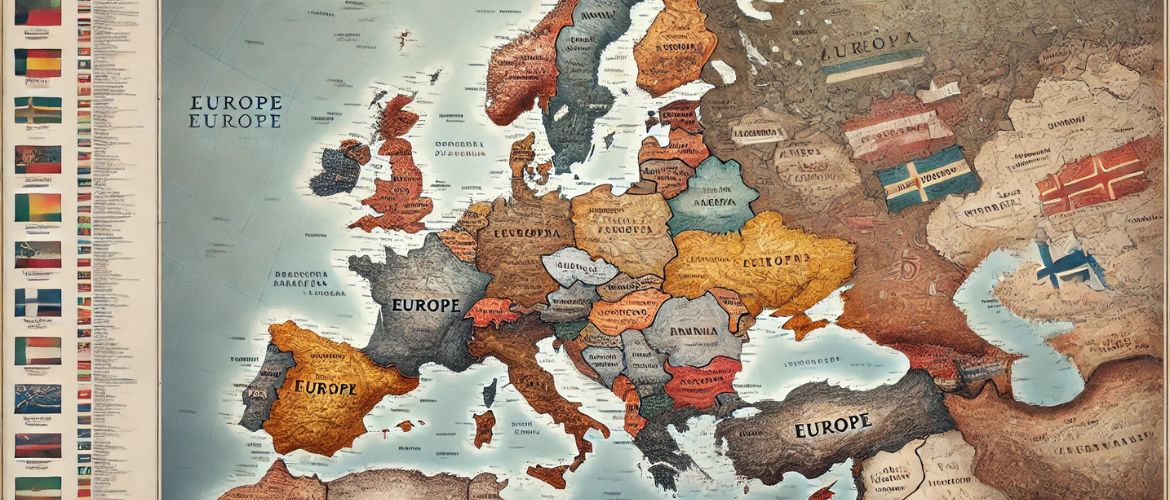Currently, there are 44 officially recognized sovereign states in Europe. However, this number can vary depending on which territories and regions are considered. For instance, some international organizations list 50 countries, including partially recognized territories and dependent regions.
How Has the Number of Countries in Europe Changed?
Ancient Empires and the Middle Ages
In ancient times, Europe was home to large empires such as the Roman Empire, which spanned much of the continent. After its fall in 476 AD, the period of medieval kingdoms began, such as France, England, the Holy Roman Empire, and others.
19th Century – The Era of Nation-States
In the 19th century, Europe experienced a wave of revolutions, leading to the formation of new countries. For example:
- Italy (1861) – Unified from numerous separate duchies and kingdoms.
- Germany (1871) – Also emerged from the unification of various German states.
20th Century – The Collapse of Empires and New Countries
After World War I (1914–1918), several new states appeared on the map of Europe, such as:
- Poland (1918) – Reestablished independence after partitions by Russia, Prussia, and Austria.
- Czechoslovakia (1918) – Formed after the collapse of the Austro-Hungarian Empire (but split into the Czech Republic and Slovakia in 1993).
After World War II, there was a new redrawing of borders, with even more changes following the dissolution of the USSR, Yugoslavia, and Czechoslovakia.
21st Century – The Last Change in Borders
The most recent country to emerge in Europe is Kosovo (2008), which declared independence from Serbia, although it is still not recognized by all the countries in the world.
Interesting Facts About the Countries of Europe
- The smallest country – Vatican City (0.49 km²), a state within Rome, where the residence of the Pope is located.
- The largest country – Russia, but only its European part is counted in this list.
- The most neighboring countries – Germany, which shares borders with 9 countries.
- In Europe, there are countries with populations of fewer than 100,000 people, such as San Marino, Liechtenstein, and Monaco.
- Spain and the United Kingdom have a disputed territory – Gibraltar.
To date, Europe has 44 countries, but their number has changed throughout history due to wars, alliances, and the dissolution of states. The political map of Europe has constantly evolved, and it’s possible that we will see further changes in the future.
Read also: How many states are there in the USA?







Only registered users can leave comments